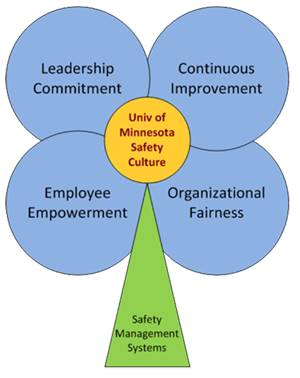(or other Departmental or Collegiate safety improvement mechanisms)
Safety committees are responsible to:
- Maintain a working knowledge of their work areas, actively engage in safety improvement, and visibly advocate for safety.
- Evaluate and improve departmental and collegiate safety cultures.
- Identify high-risk job tasks and promote the development of safe work practices.
- Identify and share best practices across the Department or College.
- Identify the need for written programs and recommend implementation to department or college leadership.
- Regularly assess and communicate with departmental and collegiate leadership through clearly defined reporting mechanisms.
- Promote and facilitate safety training.
- Review results of periodic safety audits and inspections (via Department Safety Officers). Members are also encouraged to participate.
- Solicit reports of unsafe conditions and suggest corrective actions.
- Review incidents, near misses, accident investigation reports - not for fault finding, but for fact finding to prevent a recurrence of the same or similar incident.
- Review injury and incident data for trends.
- Establish departmental and collegiate goals for safety improvement.
Safety Committee Chair’s Forum
The Safety Committee Chairs Forum was established in October 2018 to facilitate the sharing of best practices for safety improvement across the University.
The University strives to actively empower and engage our front line staff employees to assist in evolving and improving the safety culture at the University of Minnesota. Maintaining a safety committee network provides a structure and forum to support employee engagement.
The forum allows safety committees to present their work and both positively reinforce committee efforts and build expectations for departmental ownership of their own safety performance.
